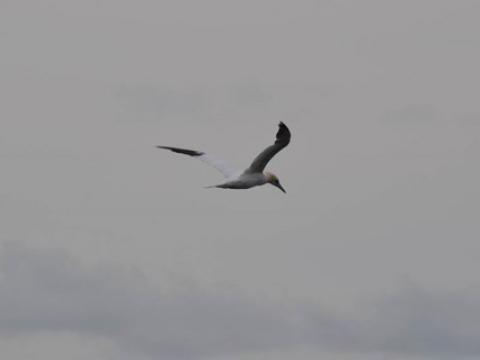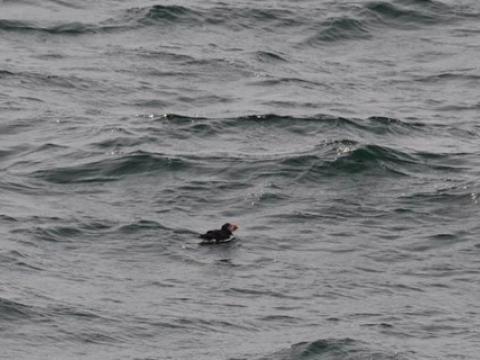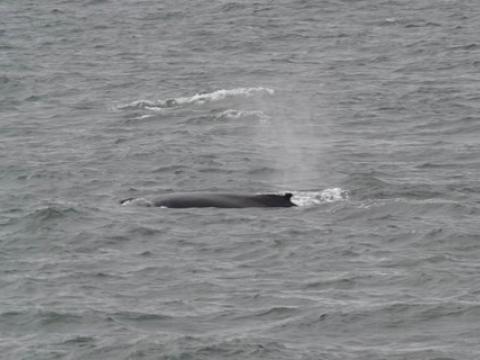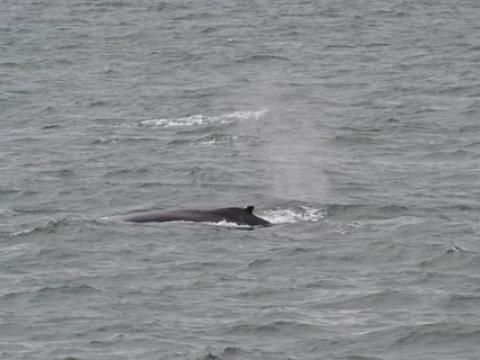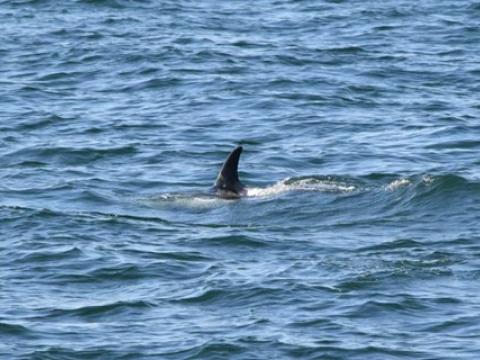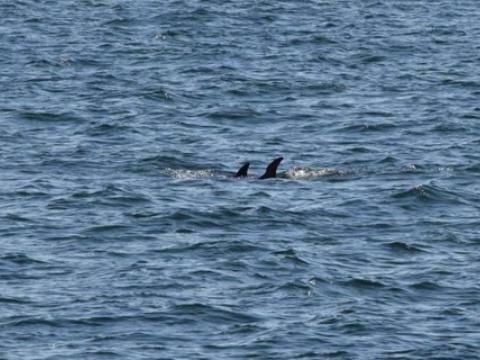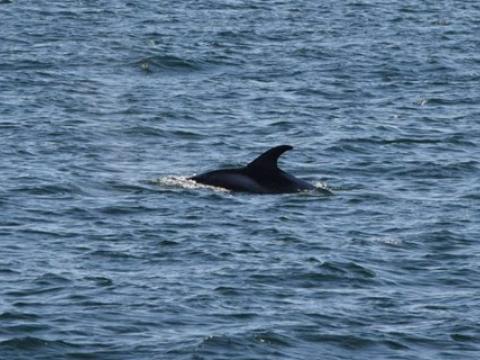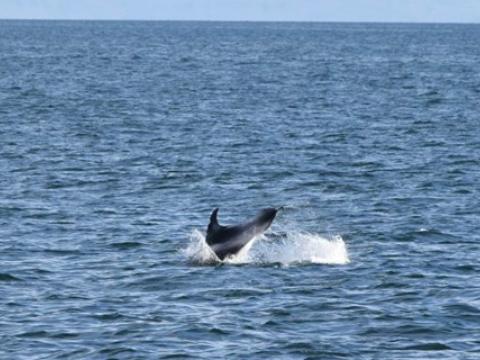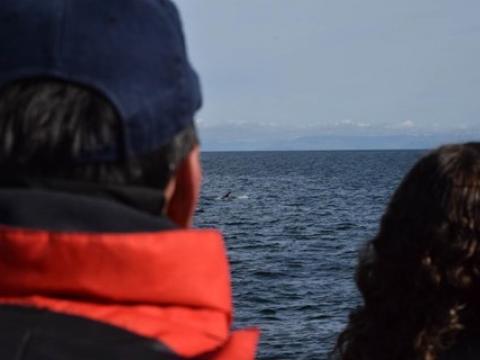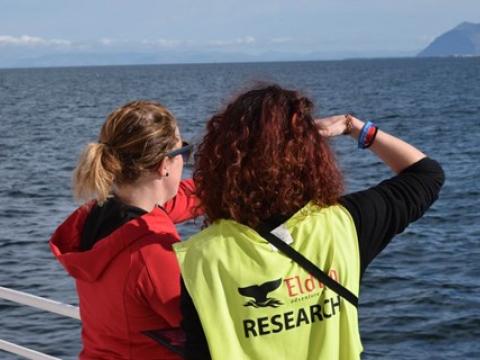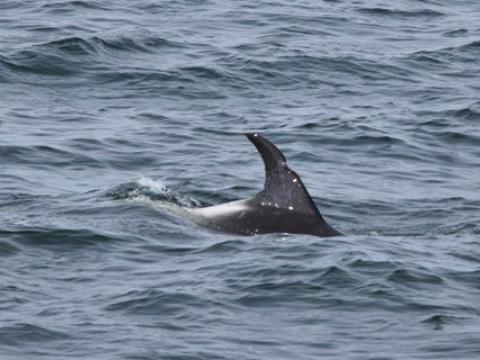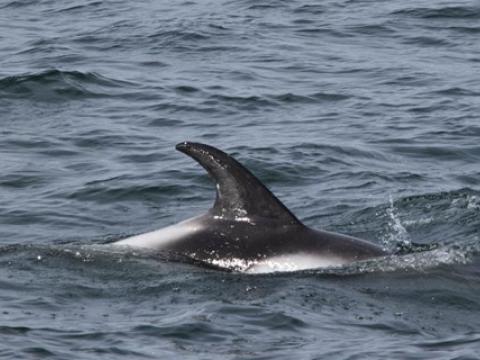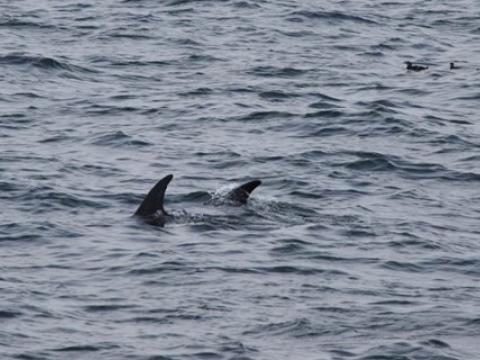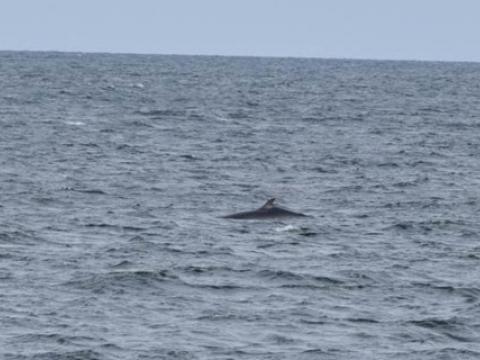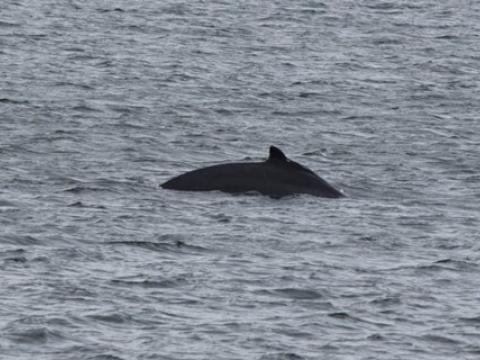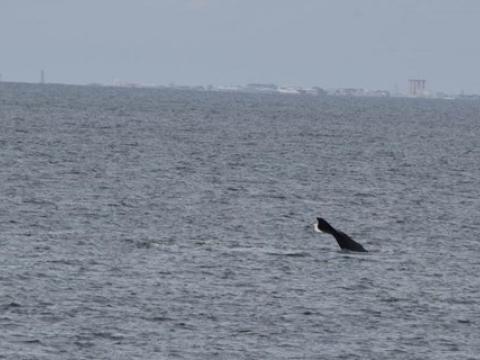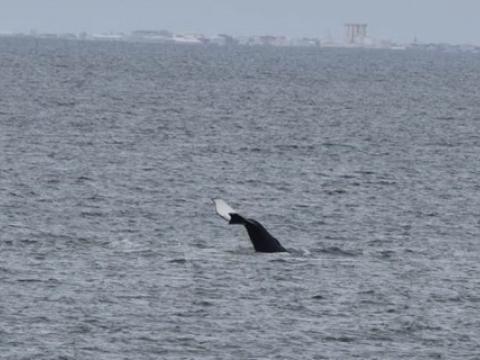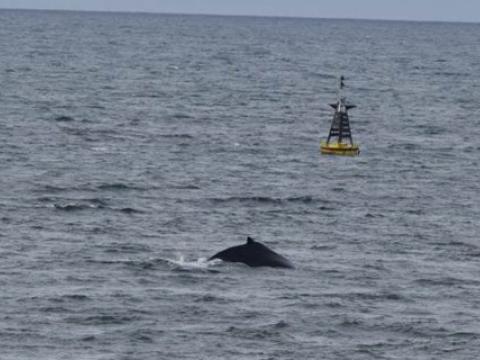Tour at 17:00
Report from Hafsúlan: The sea conditions got rougher during the day as the swell increased and the wind got stronger too. So we had a roller coaster ride out into the long swell, wave up and down. Then it also started drizzling and later on we sailed under dark clouds of light rain. The landscape around us was vanishing partly in rain clouds, but we had a close look at Akranes by passing this fisherman's town. Behind the lighthouses the waves were breaking and some people were wondering if this were dolphins but no sign of a cetaceans appeared during the whole tour. We saw some scattered birds, like fulmars which came closer or the puffins sitting on the water surface. Hopefully everybody will have the chance to come again in nicer spotting conditions with good luck seeing whales, dolphins or porpoises.
- Carine Zimmermann
Tour at 14:00
Report from Elding: The wind and swell was increasing in intensity on our way out. However, we dared to resist the waves, because we knew the chances of seeing the humpback whale from this morning were high. And in fact, only minutes away from the harbour we spotted the humpback whale. First, the individual surfaced a few times before it actually showed its fluke in a enormous sideways movement, smashing it sideways against the waves and causing a big splash. Shortly, after it showed its rostrum and back. Most certainly it was the individual that had been spotted earlier on close to Reykjavik, because we could clearly identify the rugged dorsal hump. We followed the whale for around an hour and got some nice looks of its side. Sadly, it was not fluking for us, thus we could not take the so important fluke identification picture. During our pursuit we also managed to observe a minke whale surface twice. When the swell began to rise we started turning back in the direction of the harbour, hoping for another look at another cetacean. Even though this wish was not granted, we still had a fantastic tour.
-Dominik Schmid
Tour at 13:00
Report from Hafsúlan: The wind was picking up a bit and the view at Snæfellsnes disappeared but this didn't matter at all as we just left the harbour when we had our first sighting of something unusual. A humpback whale laying motionless at the water surface very close to the puffin colony Engey. This behaviour is called logging and is often used while resting when a whale is half asleep. It was the same whale at the same moment that Elding was watching too. On board of Hafsúlan people have been cheering when seeing the breach of this humpback whale which changed its behaviour various times. We could also observe the so called tail lobbing and later tail breaching and tail slapping, all different forms of slamming its tail onto the water surface producing splashes and noise. As well as flippering was to be seen when this humpback showed its long white wings. Later he started travelling out and we could see its tail from the best position to identify it when he once fluked up in the distance. As this whale was right in the shipping lane were a cargo ship, a fishing boat and whale watching vessels passed by we decided to leave this whale and look for something else but the only thing apart from birds we found out in the bay was the same humpback whale again which made his way out into the open ocean. We had seen a big part of a repertoire of a humpback from the blow to the dorsal to the tail and all the activity and the resting, which was a very rare sighting for a not often seen species in this area at that time of the year and wishes of our passengers to see a big whale came true.
- Carine Zimmermann
Tour at 10:00
Report from Elding: The sun was warming our backs when we headed out into the bay, but soon a fresh breeze was coming up and some waves cause a rocky boat ride in the end. Luckily enough though, we had found a minke whale early on. The individual did only surface twice though before disappearing from our view. This triggered our adventure spirit, never the less, and we were able to discover two other minke whales close by a large flock of feeding seabirds. While the northern gannets plunged down, one of the whales surfaced 3 times in the suns glare before he vanished. But the luck was on our side, because we made a huge discovery back closer to the harbour. A single humpback whale was peacefully logging on the surface of the water close to Engey. For minutes we observed the individual coming up to breath, but he remained in one spot for that period. This gave us time to look real closely at the rugged dorsal hump of this whale. Eventually, the humpback whale arched its back (without showing its fluke) and dove. The excitement for this discovery made us stay in the bay and hope for another surface. We didn't have to wait long and what we saw was breath taking. The humpback whale did a half-breach, causing a big splash, and then decided to turn upside down and smash its fluke on the surface of the water and when he turned again he did so by also lifting its pectoral flipper and dropping it heavily on the water. Then it surfaced and submerged for a couple more times before we made for the harbour. What a brilliant end to a very special tour.
-Dominik Schmid
Tour at 09:00
Report from Hafsúlan: A sunny morning with a blue sky, perfect visibility at the landscape up to Sneafelljökull and calm blue ocean with almost no swell and very little wind. Great conditions to be out at sea and so we found some splashes of a big pod of white-beaked dolphins travelling fast. First the around 15 animals were all together relatively close to each other, then they split up into 3 subgroups which have been joining again from time to time. Later they slowed down and the splashing stopped completely and and group with juveniles and calves started to socialise among each other milling around in a very tight group with body contact in very slow movements. It was very interesting to see these changes going on and we stayed longer time in their vicinity but after a while we decided to look for something else and we luckily found a minke whale which we could see well too.
- Carine Zimmermann
Birds seen on today's tours include: Northern gannets, puffins, common guillemots, arctic terns, fulmars, black-backed gulls, black-headed gulls, kittiwakes, great skua, cormorant, eider ducks and turnstones.



